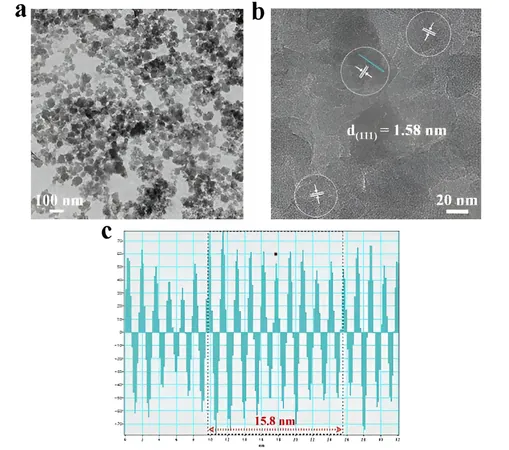
Groundbreaking Metal-Organic Framework Boosts CO₂ Conversion in Renewable Energy Bid
2024-09-23
Introduction
In a pivotal advancement in the fight against climate change, researchers have made significant strides in photocatalytic conversion of CO₂ into valuable C2 products, a process deemed essential for addressing the global energy crisis and achieving carbon neutrality. The challenge of generating C2 compounds has always been tied to sluggish multi-electron transfer processes and the inherent difficulties in C–C coupling.
Innovative Metal-Organic Framework
A fresh study published in *Angewandte Chemie International Edition* reveals how a team led by Prof. Liu Tianfu from the Fujian Institute of Research on the Structure of Matter and Prof. Wu Xinping from East China University of Science and Technology has constructed an innovative metal-organic framework (MOF) designed to tackle these issues head-on. This new MOF, referred to as PFC-98, features delocalized orbitals that enhance direct charge transfer capabilities, significantly improving electron transfer and photochemical efficiency.
Enhanced Photocatalytic Performance
By meticulously designing the components of PFC-98, the researchers were able to replace the original 1,4-Di(1H-pyrazol-4-yl)benzene (H₂DPB) linker with an electron-deficient alternative, 2,5-di(1H-pyrazol-4-yl)thiazolo[5,4-d]thiazole (PyTT). This change yielded a remarkable surge in photocatalytic performance, showcasing rates of 58.14 µmol g⁻¹ h⁻¹ for acetate production and 43.14 µmol g⁻¹ h⁻¹ for ethanol—standout figures that surpass those of the majority of materials reported to date.
Theoretical Insights
The research team conducted extensive theoretical calculations that highlighted how the lowest unoccupied molecular orbital (LUMO) energy levels of both the ligand and the metallic cluster in the PFC-98 framework were optimally aligned. This alignment facilitates an enhanced transfer of excited electrons from the ligand to the metal cluster, resulting in improved efficiency in separating and transferring electrons. Spectroscopy analyses revealed the existence of a long-lived intermediate charge-separated state created upon photoexcitation, allowing for a prolonged excited state lifetime that furthers electron-hole separation efficiency.
Conclusion
Notably, the investigation also indicated that the electron density on the metal cluster in the novel PFC-98 framework was substantially higher than in comparable frameworks. This increase in electron density is pivotal, as it notably boosts the incidence of C2 generation in photocatalytic reactions, making PFC-98 not only an innovative scientific achievement but also a crucial step toward sustainable energy solutions.
Future Implications
This groundbreaking development could not only transform the way we approach carbon dioxide recycling but may also pave the way for new strategies in renewable energy technologies—an encouraging sign for both researchers and environmental advocates alike. Will this new MOF be the key to unlocking sustainable production and thus tackling the dual threat of energy scarcity and climate change? Only time will tell, but the implications are undoubtedly inspiring.


 Brasil (PT)
Brasil (PT)
 Canada (EN)
Canada (EN)
 Chile (ES)
Chile (ES)
 España (ES)
España (ES)
 France (FR)
France (FR)
 Hong Kong (EN)
Hong Kong (EN)
 Italia (IT)
Italia (IT)
 日本 (JA)
日本 (JA)
 Magyarország (HU)
Magyarország (HU)
 Norge (NO)
Norge (NO)
 Polska (PL)
Polska (PL)
 Schweiz (DE)
Schweiz (DE)
 Singapore (EN)
Singapore (EN)
 Sverige (SV)
Sverige (SV)
 Suomi (FI)
Suomi (FI)
 Türkiye (TR)
Türkiye (TR)